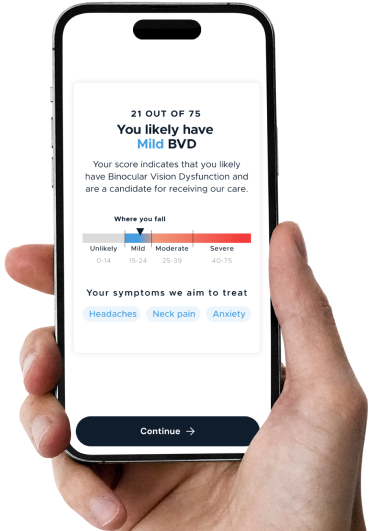Reading and writing challenges may stem from visual issues like farsightedness, convergence insufficiency, or eye misalignment. Comprehensive visual and NeuroVisual evaluations help identify the cause. Treatment options may include prescription lenses, vision therapy, or microprism glasses to reduce strain and improve reading comfort and accuracy.
Assessing and Correcting Reading and Writing Difficulties When Your Eyes Are The Problem
Reading and writing with confidence is essential for many day-to-day tasks, both at home and at work. Assessing and correcting reading and writing difficulties can be the key to improving your quality of life.
Eye issues at various levels of severity affect millions of people, including 12 million people ages 40 and over. These vision problems cause social and economic challenges, especially if you do not seek care from professionals specializing in assessing and correcting reading and writing difficulties.
Some vision problems are well-known, but doctors, researchers, and eye specialists are still learning about new vision conditions that look and sound like other medical conditions but are actually related to problems with the eyes. People diagnosed with learning disabilities or medical conditions might, in actuality, have treatable eye problems.
Identifying Vision and Reading Difficulties
When reading, your inability to make out distinct letters might come on so slowly that you barely notice the issue. Untreated eye problems that lead to vision and writing difficulties often get worse, so you must watch for symptoms of vision problems, including:
- Blurry or fuzzy letters
- Headache after reading
- Pain in the temples and around your eyes
- Eyestrain
- Excessive squinting
- Difficulty with word analysis
- Losing your place on the page
- Difficulty with reading comprehension
Take note of exactly when you start having these vision problems, which symptoms you experience, and whether they worsen over time. This information can help your eye specialist narrow down what conditions you may have and what tests to perform to diagnose them.
Assessing and Correcting Reading and Writing Difficulties
There are several possible causes of vision-related reading and writing difficulties. Understanding these conditions allows you to be an active participant in helping your doctor find solutions.
Convergence Insufficiency
Convergence Insufficiency is a condition in which the eyes don’t work well together when looking at nearby objects. Instead of easily pointing at a near object, both eyes have difficulty coming together.
While people in all age groups might experience convergence insufficiency, particularly after traumatic brain injuries or concussions, it is most often found in children and adolescents.
Doctors test for convergence insufficiency by identifying the closest
point where your eyes can still easily come together. This is called the near point of convergence. To do this test, the doctor holds an object in front of you and slowly moves it closer to find the point at which one eye moves outward, or you experience double vision.
They might also test for this condition using a fusional vergence test. During this test, you read letters on a chart while looking through different strength prism lenses, and the doctor notes the point at which you experience double vision.
Farsightedness
Hyperopia, or farsightedness, affects up to 10% of Americans. If you have farsightedness, you can see objects far away more clearly but struggle to focus on objects that are close at hand. This is caused by your eyes not bending light properly, so your retinas don’t get correctly focused images.
Doctors test for farsightedness by using a phoropter, which is a tool that looks like a mask with a camera lens. It helps your doctor determine the severity of your farsightedness.
Binocular Vision Dysfunction
Binocular vision dysfunction, or BVD, is a condition in which your eyes fail to work in sync with each other.This is due to very small eye misalignments that are not observed by traditional eye tests. These slightly misaligned images are very difficult for the brain to work with to create one single, 3-D image that us humans recognize as “normal” or “binocular” vision.
Testing for BVD includes the following steps:
- Filling out a specialized questionnaire
- Completing a detailed medical history
- Taking an eye exam to determine if you also have other eye conditions
- Undergoing a specialized exam called a NeuroVisual Evaluation to determine if you have small misalignments that are causing your vision problems
There are solutions to all of these vision problems, and the right vision professional can help you assess and correct reading and writing difficulties. You will be able to read and write again at levels that help keep you happy at home and successful at work. Don’t let fear or uncertainty stop you from getting the help you need.
Correct Reading and Writing Difficulties with a NeuroVisual Medicine Specialist
NeuroVisual Medicine specialists help patients who have sought solutions for their vision problems without success. If you experience dizziness, headaches, or vision and writing difficulties, take the BVDQ™ Assessment to learn if BVD is causing your symptoms.

